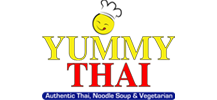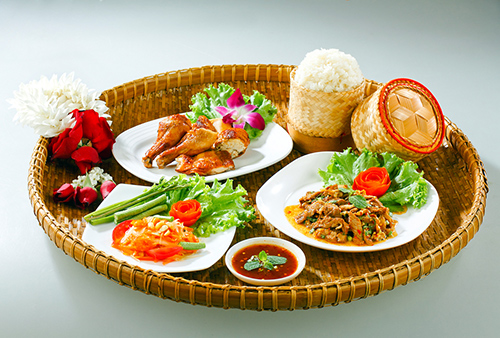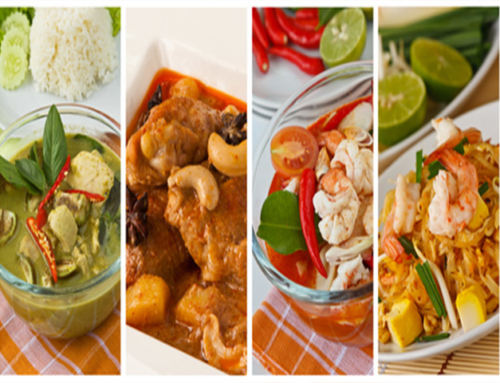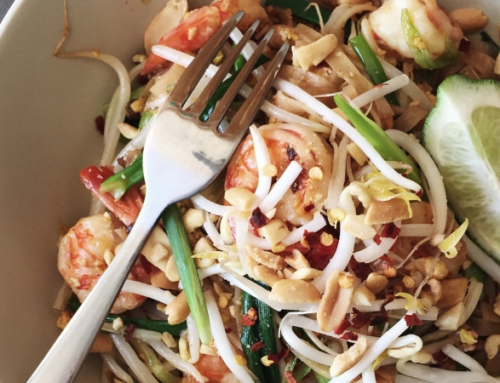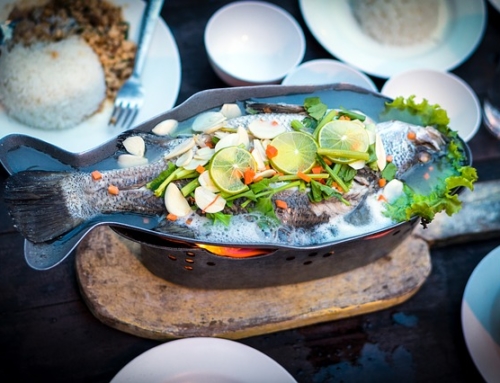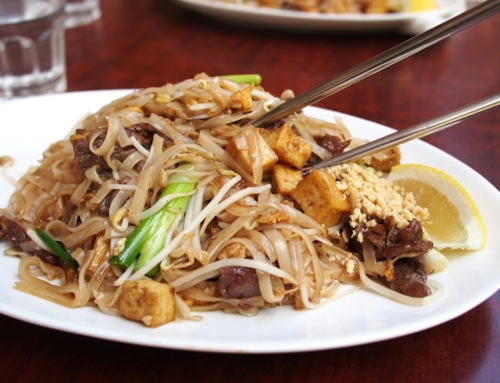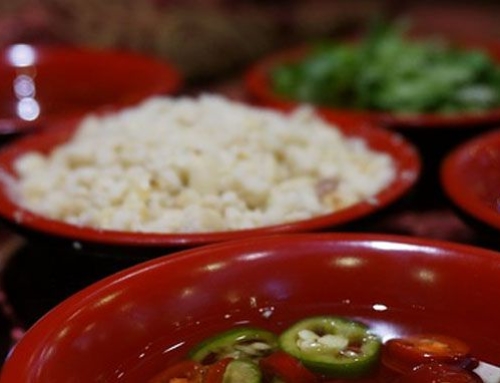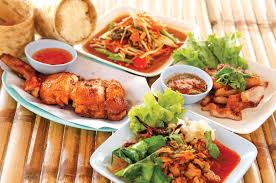
Northeastern Thai Cuisine
Also called Isaan food, the traditions of Laos and Cambodia have strongly influenced northeastern Thai Cuisine. Because it’s scorching and humid in the area, the cuisine relies heavily on the method of preservation and fermentation, and local herbs, vegetables, and spices also characterize the food. Many westerners approach street food in Bangkok with caution on their first visit. However, after trying a few of the following dishes, they return time after time.
Laab – Northeastern Thai Cuisine Minced Meat Salad
There’s no lettuce, and it’s warm when served, so the ‘salad’ aspect is a bit confusing. Laab, or ‘minced meat salad,’ tastes a lot better than it sounds! It has a salty, smoky flavor thanks to the fish sauce and ground, smoked red chili peppers. The protein is diced small and is tender. The chopped bright green spring onions, small purple onions, and dark green mint make it pop. Lastly, the toasted, coarsely ground Jasmine rice adds an interesting textural component and nutty flavor.
Jaew – Northeastern Thai Nam Prik
If you’re familiar with Thai relish “nam-prik” culture, jaew is its counterpart in Northeastern Thai Cuisine. Jaew is made as a dip to eat with the likes of steamed vegetables, fish, and sticky rice. Lying at the heart of jaew is pla ra and chili, garlic, shallots, and a tangy ingredient like lime or local tomato.
Om – Delicious Curry of Northeastern Thai Cuisine
Om is an Isaan curry made with freshly-pounded paste and without coconut cream. Seasonal vegetables lie at the heart of this soupy dish, with several options of meat like chicken, frog, pork, catfish, and pond snail. The base chili paste consists of shallots, lemongrass, and chili, but the distinct aroma and flavors come from local herbs like cilantro and lemon basil. In some recipes, the selection of herbs and vegetables may differ for each meat used in the dish.
Moo Yor – Isaan Steamed Meat Sausage
This steamed sausage snack can be eaten alone and whole, like a giant meat sausage, although it is more commonly in a spicy salad (Yum Moo Yor), which fuses the steamed pork with a fiery mix of chilies, fish sauce, pickled garlic, lime, and coriander. It is said to originate from Vietnam, and it is pretty much identical to Vietnamese Sausage (Cha Lua). Northeastern Thai Cuisine features this dish and it is famous in Ubon Ratchathani (Moo Yor Ubon).
Gaeng Nor Mai Bai Yanang – Isaan Fresh Bamboo Shoot Curry
This dish is distinct in Northeastern Thai Cuisine. Like om, it didn’t contain coconut cream and made from freshly-pounded paste. Fresh bamboo shoots—the main component of the food—need to be boiled beforehand to reduce its bitterness, while the dark green broth comes from yanang leaves. Besides chili, the soup is seasoned with pla ra fermented fish and thickened with khao buer or pounded soaked and sticky rice. Additional flavors come from seasonal vegetables in the dish.
Moo Krata – Northeastern Thai Cuisine Skillet Barbecue
It is a pork skillet barbecue and is very much hands-on eating, as everyone is involved in the preparation, cooking, and serving of the food. Marinated meats are barbecued on the top grill of the skillet, while vegetables and other ingredients boil in a soup on the side. Serve with a phenomenal spicy ‘Nam Jim’ chili sauce.
Sai Grok Isaan – Fermented Sausage of Northeastern Thai Cuisine
It is also called Isaan sour sausage, it’s smoky and packed with a tangy flavor. Its seasonings are salt and lots of garlic. It comes in a few different shapes, but it is always plugged in casings with an underlying peachy pink tone, thanks to the raw, fermented pork within. If you’re wandering around outdoor food stalls, you can always find it smoking on the grill. Look for a sausage that is either served on bamboo skewers (in the classic long sausage shape) or in smaller, snack-sized links of oblong spheres.
Most recipes add cooked rice (other variations use glass noodles, too), but it shouldn’t be so much that it distracts or dilutes the fermented pork flavor. Biting into it, and you’ll get a smooth, almost buttery sausage due to its high-fat content. Some people might be turned off by the thought of eating fermented pork. However, making salami and chorizo has a similar way, and many have eaten those items without giving their process a second thought!
Pla Som – Fermented Fish of Northeastern Thai Cuisine
Pla means fish, and som means sour in the Isaan dialect so you can be sure that pla som involves fish with a hint of sourness from the fermentation process that is part of its preparation. Pla som can be either whole fish, fillets, or slices that have salt and garlic seasonings, wrapped with seasoned cooked rice, and left for a few days. Freshwater fish like java barb (pla tapien) is the most commonly used fish for pla som, and when ready, it is usually deep-fried or grilled.
Miang Kham – Isaan Leafy Treat
Miang Kham is essential nibble food, where it offers an ideal introduction to Thai food and the essential Thai flavors. While there are many variations of Miang Kham, the typical wrap set shares a combination of shallot onion, chilies, ginger, peanut, coconut, and small cuts of lime. These ingredients are then wrapped in a “Cha Plu” leaf, and popped in the mouth for an explosive Thai flavor experience. They are typically found as starter sets on fancier menus but are also popular with Khantoke dining, where again, they are more familiar to Lanna Cuisine.
Mu ping – Northeastern Thai Cuisine Pork Barbecue
“Mu” means pork in Thai, and “ping” means barbecued. And this treat is pretty much as simple as that. Most vendors let you handpick skewers hot off the grill, and you’ll want to ask for a bag of sticky rice to complete your meal. Mu Ping can be found in every market and on every street corner in Thailand. These quick, cheap snacks are full of flavor and super easy to prepare. They cook quickly, so they’re perfect for a barbecue where you’ve got a lot of hungry mouths to feed, and they make a great alternative to another burnt sausage! No matter where you are in Thailand, finding mu ping is as easy as finding a convenience store.
COVID-19 NOTICE
Due to the (COVID-19) restrictions on restaurants, Yummy Thai indoor dining is close, but our Delivery and Take are open. We will open all days from 11:00 am to 10:00 pm from Sunday to Monday for take-out and delivery only!
Get 10% off your first order on our website! Click here.
Now that we have given you a clear idea about How to Enjoy Thai Food at Restaurants – all you have to do is to taste them! So, go ahead and visit us at 1901 Long Prairie Rd Suite # 260 Flower Mound, TX!
More like this:
Mouth Watering Thai Foods You’ll Love at Yummy Thai Flowermound
How to Enjoy Thai Food at Restaurants – Norms & Traditions
Famous Thai Soups That Are Worth Trying!

